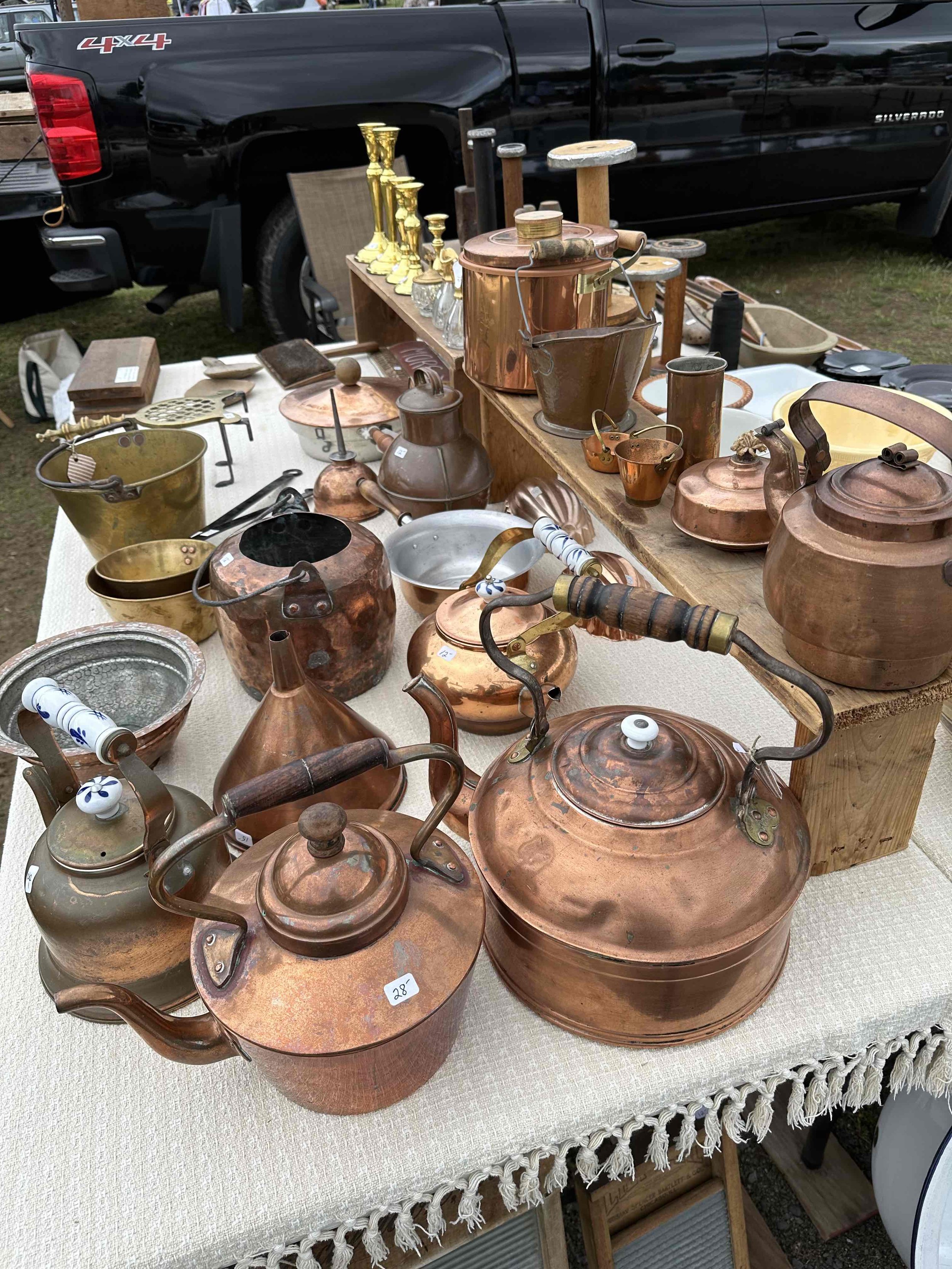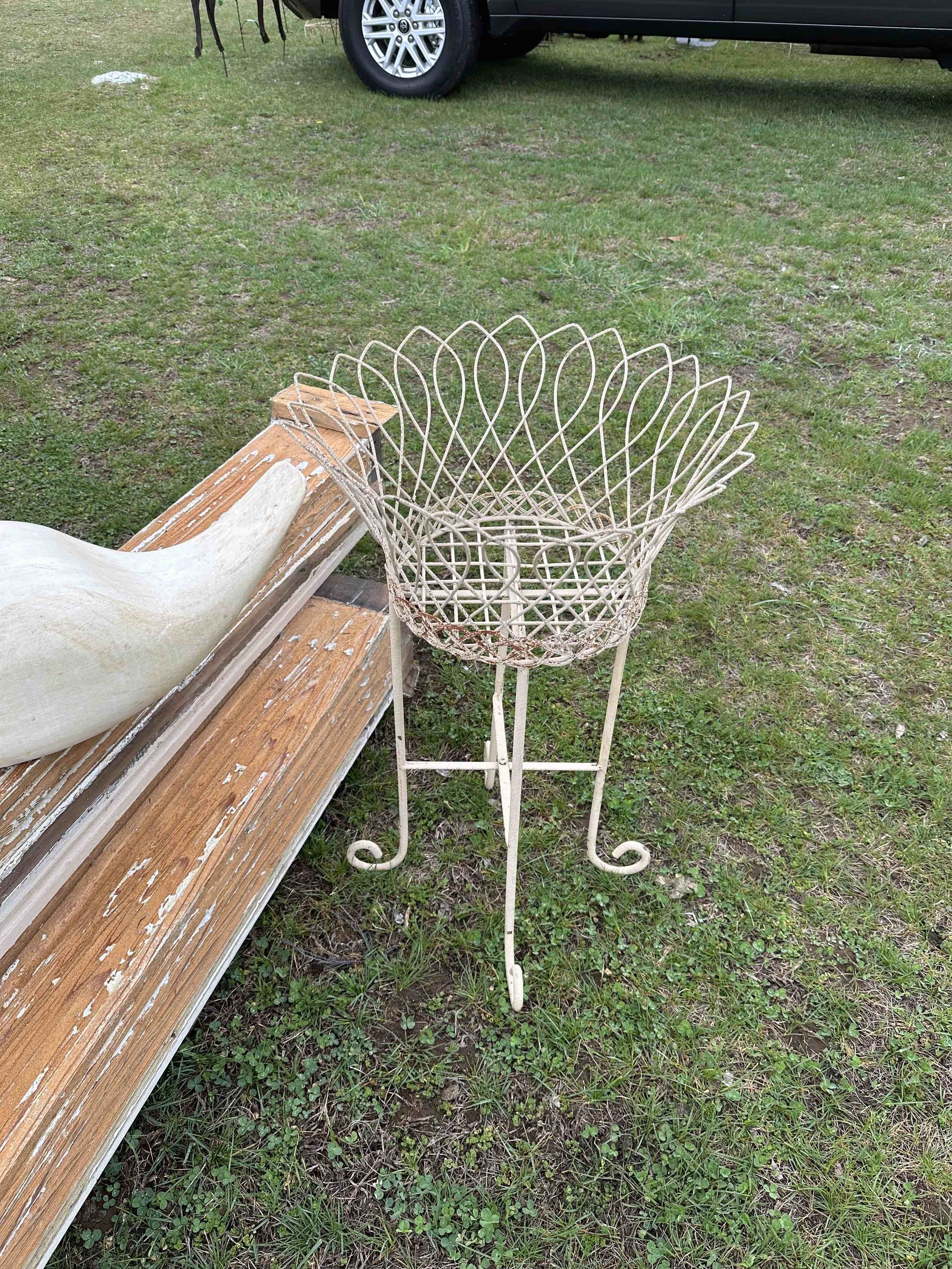8 Tips to Navigate Summer Flea Markets
How to spot the good stuff and get the best deal at the flea market
There are many things I look forward to in summer – from the holy trifecta of seasonal produce (peaches, corn, tomatoes) to my well-documented love of a beautifully set outdoor table – but today I am going to focus on shopping, specifically shopping for vintage home decor at flea markets, which are in their prime in summertime. If you’re looking to create a personal, collected home filled with interesting objects that mean something to you, then that is a good place to find them. Flea market finds are automatically more unique being mostly vintage or antique and one-of-a-kind you won’t find in an aisle at [insert online store]. Plus, the extra effort it takes to find them makes them more special — there’s often a story behind them.
We tend to move around more in the summer whether it’s a road trip or a transatlantic flight, and along the journey, there are always lots of fun places to shop. In fact, I recommend building stops into your itinerary as off-the-beaten-path shops and markets in holiday destinations are where one can find pieces that will be cherished the most. You don’t want to miss out! Do a little research before you go specifically look for recommendations from locals and experts (and check the dates they’re open!). But it’s not all about planning – be open to discovery and spontaneity; never hesitate to pull over if something looks interesting.
I cultivated my thrill of the chase going on shopping adventures with my mom from the time I was a young girl. We’d hop in the car typically with a destination in mind and would merrily make stops along the way whenever anything caught our eye – the objective was always to find places piled high with stuff to sort through with the hope of finding something we couldn’t leave behind and enjoying the experience anyway even if we didn’t buy anything at all.
For many, flea markets and the like can be very overwhelming. So, I wanted to pass along some tips that have helped me navigate some the the biggest markets around the world — to help discern what’s worth buying (or saying ‘no’ to), avoid getting ripped off, and ultimately find ‘the good stuff’. Many of these I picked up from my mom on those trips; she’s the first to tell me what I’m looking at is junk or point out something I’m missing. My hope is these tips help provide that extra perspective to sift through it all and walk away happy, hopefully with arms full of loot.
P.S. If you can’t make it to a flea market this summer, there are so many amazing vintage and antique finds to discover online. I’ve curated some of my recent favorites in this email or tap on the link below to see more.
My Top Shopping Tips for the Flea Market
Make a wish list
I find it’s helpful to go in with a list of what I’m looking for whether it’s stored in my head or the Notes app in my phone. I think setting an intention helps to manifest those items. Furthermore, a list keeps me on track and gives me something to focus on when I’m sorting through lots of stuff. You can’t go through everything. Prioritize what you came for. On a recent trip with my mom, she discovered one of her ‘wish list’ items, a vase in the style of Colefax & Fowler. Of course, I still remain open to things that aren’t on the list.
Large Italian Cabbage Bowl
Fish Copper Jelly Mold
Measure it up, literally
Another thing to prepare in advance… I try to note the measurements of anything I’m looking for that needs to be a certain size. For instance, the last time I went to an antique center, I found a frame with beautiful French matting, and I thought it might be perfect to use for a print I have that is missing a home. Unfortunately, I didn’t know the measurements of the print, so I had to leave it behind (and it’s lucky I did because it would not have fit anyway). I won’t make that mistake again. Do yourself a favor and write down those key measurements so you can be prepared to make decisions on the spot.
Be wise with your $$
I find it’s helpful to set a budget for myself. If I’m going to a flea market or a place with individual vendors, I try to bring cash. First, this helps me stick to my budget. You can only spend what you have. Second, most vendors will give you a much better deal if you pay cash, or you can leverage what you have left to get what you want (eg: offer $20 for item X and Y that add up to $30). Finally, don’t fall for something just because it’s a good price. Ask yourself, do you want it because it’s cheap, or because you actually like it.
Spotting the ‘Made in Italy’ marking on the bottom of these charming donkey bowls.
Sizing up the silverware
Flip it and inspect it
There are a lot of dupes out there – dupes aren’t bad if you love the item, but you should not be paying the price for the real thing when it’s not. I’m in the habit of flipping over items to see if there are any labels on the bottom that indicate the piece’s quality and authenticity. For example, if I see a painted piece of ceramic that looks Italian, I check the bottom to see if there’s a ‘Made in Italy’ label. I don’t bother with it if it doesn’t. Another example is with silver – I look for a ‘Sterling Silver’ mark on the bottom, indicating it is made of mostly silver (vs plated in silver). The marking helps me determine if the price is fair — silver plate should be a lot less, but you can sometimes get a good deal for Sterling. If I don’t recognize the label, I’ll Google the name and the type of object it is, and almost always find a listing of some sort, with a price and a description for context. It’s just all about making informed decisions.
If it sticks, it’s not the real thing
Along the same lines, you’ll find a lot of stuff purporting to be brass or copper, but is in fact only plated with iron or steel underneath. Don’t let it fool you. Bring a magnet and hold it against the item – if it sticks, then it is not solid brass or copper. You could say, why does it matter? Again, if you love something and the price is right, it doesn’t. Keep in mind, metals like steel are less resistant to corrosion so it might not last as long. If you believe in collecting pieces that will go the distance, invest in the real thing.
Do you have a place / use for it?
As a check before buying something, especially if it isn’t on my wish list, I like to ask myself, do I have a place for it in my home, and do I have a use for it? The last thing I want is to get it home and not know what to do with it. When I challenge myself, I usually come up with some pretty creative uses for flea market finds. Like, the hand painted bread plates (Made in Italy, natch) that I used as saucers for plants and candles. Baskets can be used to store blankets, kindling, magazines, toilet paper, or as a planters. Little boxes or small dishes are good for matches, coasters, toiletries, remotes. Open vessels can of course be used for flowers, but also as crocks for kitchen utensils or storage for candle sticks. Think outside of the box!
It pays to be picky AND be patient
In my experience, you can have one of two reactions when confronted with a lot of stuff – ‘I want everything?” or “This is all junk”. For the eager beavers, you must resist the urge to buy everything. You have to be discerning, otherwise, you will recreate the flea market at home. There’s a fine line between junk and treasure. Following these steps should help you make smart decisions about what’s worth you money and space. For the naysayers, you have to give it a chance and work the junk, if you will. Treasures should take a little time and effort to unearth. That’s what will make them even more special in the end.
Trust your instincts – and believe what’s meant to be will be
When you’ve gone through all the steps, and you’re still deciding whether or not to get something, it ultimately comes down to your instincts. They usually guide you to make the right choice… even if you don’t ultimately listen to them at first. On a recent trip, I spotted a paper bag vase that I didn’t think too much about at the time (I didn’t even snap a photo!). Then a week or so later, I suddenly realized I had to have it. Luckily, it wasn’t too late – my mom was able to rescue it for me, like it was meant to be. Now it is one of my favorite vases.
Bringing Flea Market Finds Home
What I Got vs. How I Styled It
Hand Painted Plates
As soon as I spotted these really unique hand painted plates, I had the thought of using them as saucers for my new pots. A perfect match.
Wrought Iron Planter
I got this plant stand knowing that I wanted to style it with a terracotta pot and either a geranium or a fern. The great thing about this plant stand is that it can move around to wherever I want to add some decoration.
Vintage Glass Bottles
I always look out for these vintage bottles in pale blue, royal blue and green in varying heights and shapes, and I like to group them together to arrange buds. A few of them work well on a coffee table, and a larger cluster looks great on a dining table.
A curated guide to creating a one-of-a-kind home: interior inspiration, styling tips, & unique objects
FOLLOW ALONGRELATED ARTICLESTravel Guide to Devon & Cornwall
Every product is curated independently. Things you buy through our links may earn us a commission.
sense of spen• cer
noun [sɛns, əv, ˈspɛnsər]
Reflecting one’s identity through their interiors
A home with character and soul
When a house becomes a home




























